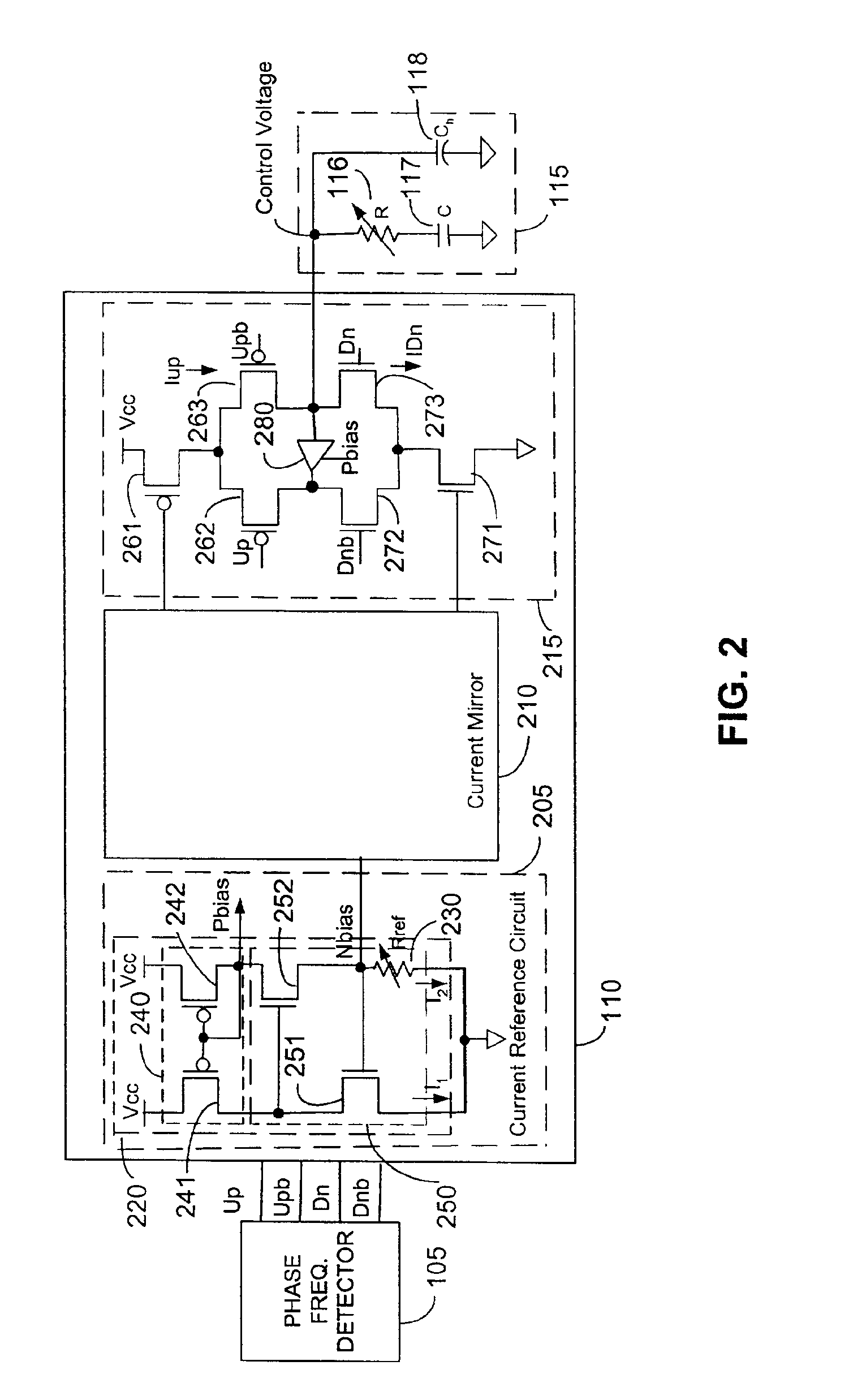Programmable loop bandwidth in phase locked loop (PLL) circuit
a technology of phase lock loop and programmable loop, which is applied in the direction of electrical equipment, pulse automatic control, etc., can solve the problem of limiting the usefulness of the pll circui
- Summary
- Abstract
- Description
- Claims
- Application Information
AI Technical Summary
Benefits of technology
Problems solved by technology
Method used
Image
Examples
second embodiment
FIG. 4 is a detailed circuit diagram of the programmable bandwidth loop filter of the present invention. In FIG. 4, resistors R1 through RY are coupled in series, where Y is an integer and in this specific embodiment is equal to or greater than 3. More generally, Y is an integer equal to or greater than 1. As can be seen in FIG. 4, CMOS transistors 1 through Y are coupled across one or more of the resistors R1 through RY. In one embodiment, the CMOS transistors have a relatively small resistance. This allows to effectively short around the desired resistors in the series R1 through RY to obtain the desired overall resistance. In one embodiment, all of the resistors R1 through RY have the same resistance. In another embodiment, each of the resistors R1 and RY has a different resistance. By turning on one or more of the rip appropriate CMOS transistors and turning off the remaining CMOS transistors, a desired overall resistance may be obtained.
third embodiment
FIG. 5 is a detailed circuit diagram of the programmable bandwidth loop filter 115 of the present invention. In the embodiment shown in FIG. 5, each of CMOS transistors CMOS 1 to CMOSY provides a shorting path around one, rather than a plurality, of resistors R1 to RY. As can be seen in FIG. 5, transistors CMOS1 to CMOSY provide a shorting path around resistors R1 to RY, respectively.
In the embodiments shown in FIGS. 4 and 5, there are no CMOS transistors coupled in series with the resistors R1 to RY. In another embodiment, there may be a CMOS transistor coupled in series with resistors R1 to RY.
fourth embodiment
FIG. 6 is a detailed circuit diagram of the programmable bandwidth loop filter 115 of the present invention. In the embodiment shown in FIG. 6, there is a combination of both parallel and serial resistances. By turning on one or more of the appropriate CMOS transistors and turning off the remaining CMOS transistors, a desired overall resistance may be obtained. As can be seen in FIG. 6, turning on any one of CMOSY1 through CMOSYX would short all the resistors R11 through RYX. Thus, having only one of CMOSY1 through CMOSYX is sufficient for shorting all resistors R11 through RYX. In one embodiment, all of the resistors R11 through RYX have the same resistance. In another embodiment, each of the resistors R11 and RYX has a different resistance.
PUM
 Login to View More
Login to View More Abstract
Description
Claims
Application Information
 Login to View More
Login to View More - R&D
- Intellectual Property
- Life Sciences
- Materials
- Tech Scout
- Unparalleled Data Quality
- Higher Quality Content
- 60% Fewer Hallucinations
Browse by: Latest US Patents, China's latest patents, Technical Efficacy Thesaurus, Application Domain, Technology Topic, Popular Technical Reports.
© 2025 PatSnap. All rights reserved.Legal|Privacy policy|Modern Slavery Act Transparency Statement|Sitemap|About US| Contact US: help@patsnap.com



